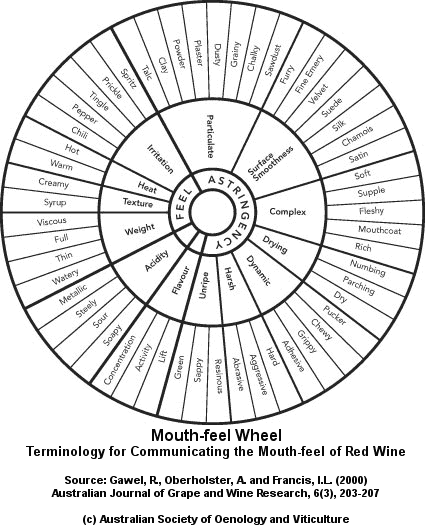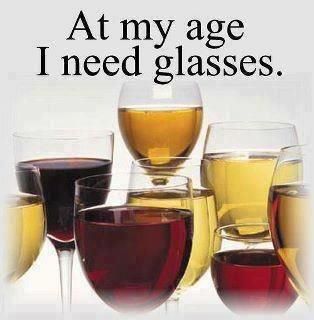The days run together, they run away from us. More quickly than we can possibly imagine, they are gone. It seems just yesterday I was at lunch with my dear friend Karen and she suggested, “You should do a blog on wine.” I, naturally, sat up straight, in true Barney Stinson fashion and declared, “Challenge accepted! Not only shall I do a wine blog, I shall also do a wine blog for each sense!”
So, here we are, months later. Not sure how so much time went by. We’ve gone through a Wine 101, a sight, a smell, a taste and a sound blog featuring that magic elixir, spoiled grape juice. Some of these blogs have been easier than others. I mean, it’s tough to go wrong with taste. Smell and sight were okay as well. Now, sound was a little dicey, but it all worked out. I left the most difficult for the last… welcome to touch, my friends.
Wine relates to touch in two simple yet profound ways. The first is something called “mouth feel” and the second is temperature. Both of these interact with taste and affect how our sensations are perceived, much the same way that we saw in a previous post on how taste and smell are linked.
Mouth feel is not the same thing as taste though it influences and enhances it. Put in its simplest terms, mouth feel is just that, how the wine feels in your mouth. How thick, syrupy or watery does the wine feel to you? The real or perceived consistency or density of a wine is derived from several components. We speak in terms of the wine’s “body”. Real body refers to a wine that truly is thicker in density, while perceived body is a wine’s feel in the mouth whether it is truly denser or not. A full-bodied wine, such as Burgundy, may be referred to as “chewy,” while a wine such as a Bordeaux would be lighter by comparison. A thin or “meager” wine lacks body altogether. For you beer drinkers out there, think of real body in terms of a Guinness versus a Coors. Perceived body would be better expressed in terms of a soda comparison. Diet drinks have the same actual body (thickness) as regular calorie drinks, but their (the diet drinks’) perceived body is thinner to the person drinking them. Commercials usually describe them as “light” or “refreshing” as opposed to thin, still, you get the idea.
Mouth feel is also described in terms of other factors. One of these is the wine’s astringency. You’ll know you’ve had an astringent wine when you experience a sort of rough, puckery feeling. Usually this is attributed to too many tannins. Some tannins and you’ve got a wine with good structure. Too many tannins and you’ll end up with a wine that has an astringent mouth feel. It’s a fine balancing act for the wine maker involved. Other words that you may find appropriate as you try to describe the wine’s mouth feel are : chalkiness, furry-ness or chewy-ness. I swear, I didn’t just make these up.
Here is a chart that can help you identify what you’re feeling. It’s designed for red wine, but the terms can be extrapolated for white wines as well.

So, how can a winemaker change the mouth feel of his or her wines? There are three ways currently in widespread use. These are malolactic fermentation, adding tannins and changing the residual sugars in the wine. There once was a time when mouth feel was just something that naturally happened to good wines. These days, like with so many other products, it can be made to order in every nuance.
Malolactic fermentation tends to produce a broader, fatter mouth feel. Basically, vintners use a special strain of yeast to change harsher malic acids into lactic acid and carbon dioxide. This reduces the wine’s astringent properties and gives the wine taster a fuller, smoother mouth feel experience. The wine is also endowed with a cleaner, fresher taste. Labs have isolated and cultured yeast strains that produce a range of mouth feel effects. For instance, say a wine maker wants a buttery texture without a buttery taste, there are “neutral” strains that simply alter the acid mix, leaving the flavor profile intact.
The second category of mouth feel enhancements are tannin additives, mainly derived from oak, but also sometimes from grapes. Barrels used to do this job; these days, there are more options. There are many oak alternatives giving a range of effects: powders, chips, nuggets, etc. These can all be toasted or untoasted. The toasted tannins would change the wine’s flavor by contributing a caramel or smoky note to the wine. Untoasted oak would have less impact on the wine’s taste. Adding tannins, as I mentioned above, is a double-edged sword. There can be too much of a good thing. We’ve all met someone who used to be able to drink red wine and now no longer can, usually the culprit is tannin. Symptoms can include headaches or gastrointestinal issues. Notice that I said red wine, however, tannins are also added to some whites, though less often and in lower intensity.
Finally, we come to one more method to enhance mouth feel, residual sugar. This is what gives dessert wines a generous helping of body as well as plenty of the expected sweetness. Residual sugars can also change the balance of a dry wine when used in very small doses. The easiest way to define this factor is the percentage, by weight or volume, of the unfermented grape sugar in a bottled wine. The amount of residual sugars in wine has been augmented in several ways through history. One method would be by harvesting the grapes as late in the season as possible, even allowing them to partially shrivel on the vine. Another method would be to stop fermentation early. The last method is simply to add additional sugar to the wine. In the past this was done through adding honey or reserved grape juice, these days a combination of glucose and fructose is added. Wine makers tread a fine line between the luscious mouth feel they want and something too cloyingly syrupy.
The second way in which the sense of touch comes into play during wine tasting is through the temperature of the wine. The temperature you choose to serve your wine at will alter the wine’s taste and aroma. White wines are served traditionally at a cooler temperature than reds, however, many wine drinkers over chill their whites. If the wine is too cold the flavors won’t “open up” and you miss the best bits of the wine. A suggested serving temperature for white is around 45 degrees. Your kitchen refrigerator runs at about 35 to 40 degrees, so when you entertain, take your whites out of the refrigerator about 20 to 30 minutes before you want to serve them.
Most people know the bit about chilling your whites, and while I never want a red to be chilled to that extent, it’s better to serve your red wine too cold than too warm. A red wine served too warm loses its freshness and often ends up tasting too “alcoholy”. Now if someone does chill your red wine, simply cup your hands around the bowl of your glass, smile and nod politely. It will quickly warm to a more drinkable temperature. A common misconception is that red wine should be served at “room temperature”. This makes no sense since depending upon geography and season, your room may be much warmer or colder than my room. A good rule of thumb for storage and serving of reds is around 55 degrees Fahrenheit. You are looking for that sweet spot between too cold to get the full impact of flavor and so warm that you’re being overwhelmed with the alcohol notes infringing on the wine’s other tastes.
Again, as with every other blog where I’ve discussed wine, this is all subjective. If you have found a temperature that makes you happy when you drink your wines, go with it. The important thing is that you enjoy that magical elixir, that ambrosia of the gods, that magnificent repast that is quite simply, spoiled grape juice.

Slainte!
Hmm, NOW, what do I write on next???
Wine … offers a greater range for enjoyment and appreciation than possibly any other purely sensory thing which may be purchased.”
— Ernest Hemingway
